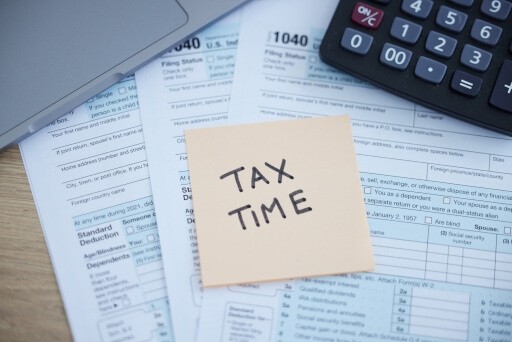As a landlord, you are responsible for keeping your rental property habitable. Likewise, tenants are responsible for treating the rental with care, as if it were their own. Landlords and tenants will both benefit from working together to maintain the property, which includes keeping the unit warm during the winter while being efficient, therefore saving on utilities (regardless of who pays them). Improving the heating efficiency of your rental property and passing tips along to your tenants will help you both during the colder months.
Before you can improve your rental’s heating efficiency, you have to know where your home loses heat. Here are the top ways rental properties lose heat and what you can do as the property owner to improve the problem:
1. Insulate Windows and Doors
Drafty windows and doors are one of the most common sources of heat loss in a home. To find air leaks, take a lit candle and trace it along the edges of windows and doors. If the candle flickers, or the smoke wisps away, there’s likely a leak.
To seal air leaks in windows and doors, simply apply caulk over the leak. You can also temporarily seal drafty windows with rope caulking, a clay-like adhesive that can be placed over cracks. It can be removed easily with no residue as well and is a good temporary solution. If you don’t have air leaks, but the current caulking is showing age, go ahead and replace the caulking to prevent future air leaks. Weatherstripping is also a great solution that is usually self-adhesive and can be applied to the tops, sides, and bottoms of doors and windows.
2. Routinely Replace Furnace Filter
Routine HVAC maintenance is a major factor in lowering energy costs. If the furnace doesn’t heat the house as well as it used to, it’s likely because the filter needs to be changed. Dust gets trapped in furnace filters, making the furnace work harder to heat an area, which will likely increase your heating bill. Give your tenant an easy way to request a repair if they notice their home is not warming up due to an old HVAC. With Apartments.com, tenants can submit maintenance requests online, and you can update them as the repair progresses.
Before you buy new filters, check the instructions on the furnace to see what kind and size you’ll need. It’s standard to change furnace filters every three to six months, depending on the size and how often the furnace is used. However, if your furnace is used heavily during the winter months, we suggest replacing the filter as often as monthly.
3. Install a Programmable Thermostat
A programmable thermostat can save both time and money since it can be programmed to fit the user’s schedule. This means less adjusting the thermostat as well as monthly savings on the utility bill. When your tenant moves in, simply show them how to use the thermostat and explain how programming it to fit their schedule will save them money on their utility bill every month.
To take it a step further, a smart thermostat can be considered a luxury feature that many renters will be interested in, especially since it can potentially lower utility costs and make the rental more energy efficient. A smart thermostat is also programmable, but the key difference is that it is designed to learn the user’s behavior over time, automatically adjusting the temperature based on the user’s habits.
4. Insulate the Attic
If your rental has an attic or crawl space that isn’t properly insulated, the heat in your property is going straight through the roof (or floor). If the insulation is below or level with the ceiling joists in the attic, you will want to add more insulation. Proper insulation helps to keep the property cooler in the summer and warmer in the winter, which will keep tenants from having to adjust the thermostat as often, therefore saving them money on utility bills.
Keep in mind that it should be your responsibility as the property owner to handle attic insulation, whether you do the maintenance yourself or hire a professional, rather than leave this task to your tenants.
As a temporary solution, you can add an attic tent to help seal the drafty attic door. They are affordable and easy to install.
5. Turn Off the Bathroom Fan
Although this may seem like a minor factor, leaving the bathroom fan on for an extended period of time can suck the heat from the room, and even the rest of the house. It’s important to encourage renters to turn off the bathroom fan so that it doesn’t run longer than necessary and cause unnecessary heating costs.
6. Reduce Water Heater Temperature
Lowering the temperature on your water heater will help to save tenant’s money on their utility bills. By lowering the water heater to approximately 120 degrees, you can save tenants three to five percent on their water heating costs. We recommend putting the water heater at the desired temperature before your tenant moves in so you don’t have to worry about adjusting it during a routine inspection.
7. Make the Fireplace Usable
If your rental property has a functioning, wood burning fireplace, be sure to have it cleaned and checked out by a professional before your tenant moves in. Using the fireplace as a source of heat, rather than just turning up the thermostat, will help tenants stay warm while also lessening their utility bills, even if it’s just for a few cold winter nights.
However, inform your tenant that they must close the fireplace damper the next morning to ensure cold air isn’t coming through the fireplace afterwards.
Working Together for a Warmer, More Energy Efficient Rental Property
Your tenants desire a warm living space and an affordable utility bill as much as you want an efficient, well-maintained rental property. Informing tenants of potential savings, both money- and heat-wise, will hopefully encourage them to participate in the effort to keep the rental energy efficient. Although it’s your responsibility to ensure the property is energy efficient and habitable for your tenants, it’s up to them to follow your guidelines and do their part.











